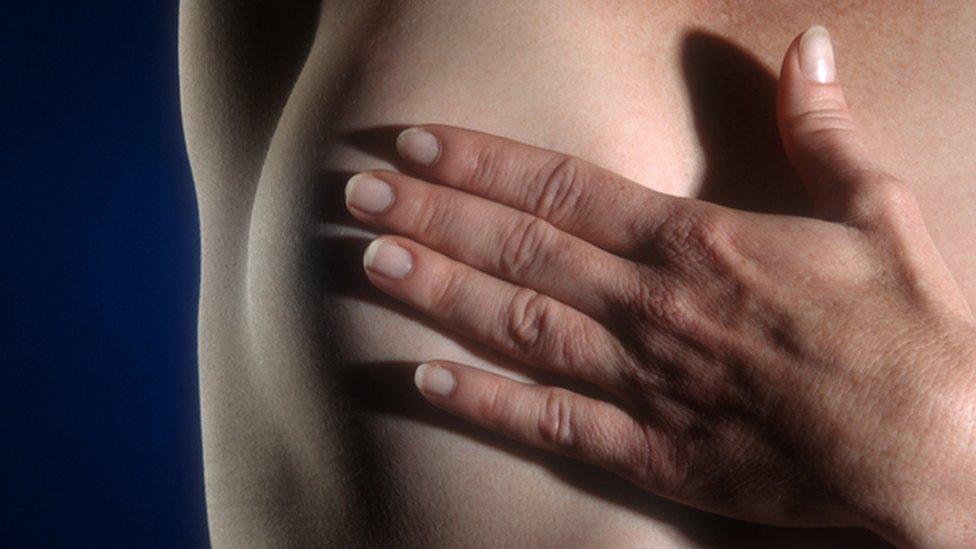Could this bra detect breast cancer?
- Published
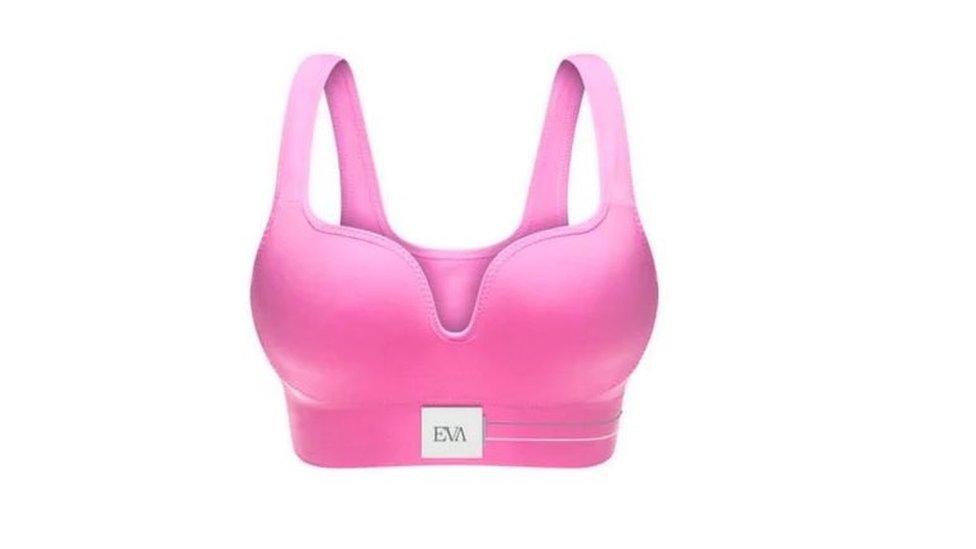
A teenager in Mexico has invented a bra to detect breast cancer. But does it work? And if so, how?
Julian Rios Cantu, 18, has made a bra that he says will be an early warning system for breast cancer symptoms.
The Eva bra, made by him and three friends who formed a company together, is only at the prototype stage.
But they have raised enough money to start tests and, this week, won the top prize at the Global Student Entrepreneur Awards.
Their company, Higia Technologies, beat young entrepreneurs from around the world to win $20,000 (£15,500) to develop their idea.
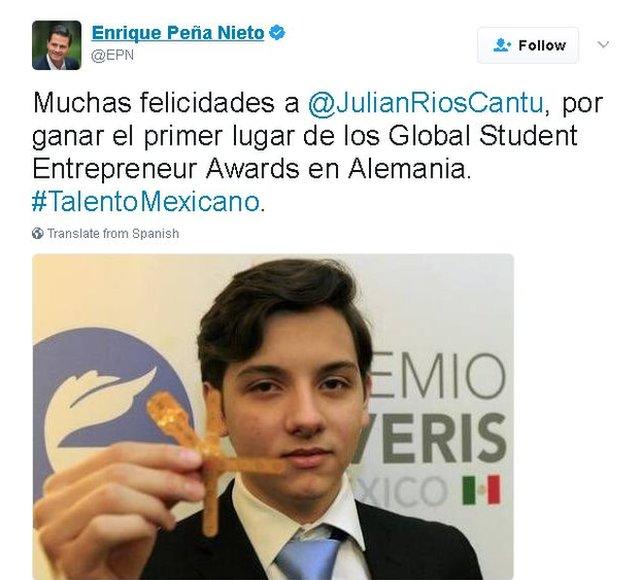
The president of Mexico tweeted congratulations to Julian after he won the entrepreneurship awards, and added a picture of the young inventor holding an example of the biosensors used in the Eva bra
How would a cancer-detecting bra work?
Cancerous tumours may turn skin a different temperature due to increased blood flow. The idea of the Eva bra is that biosensors would measure temperatures, log them in an app, and alert a user to any disturbing changes.
Women using the bra would need to wear it for 60-90 minutes a week to get accurate measurements.
In one interview last year, Julian said having the sensors inside a bra would mean the breasts were in the same position each time measurements were taken.
Will a cancer-detecting bra actually work?
This is in the really early stages. It hasn't been fully tested yet and there would need to be medical trials before cancer experts started recommending it as a way to find cancer.
Anna Perman from Cancer Research UK told the BBC: "We know that tumours often have an abnormal system of blood vessels, but we also know that increased blood flow isn't necessarily a reliable marker of cancer.
"At present, there is no evidence to show whether this bra is a reliable way to detect tumours, and it's certainly not a good idea for women to use technology that hasn't been tested in good-quality scientific trials.
"It's great to see young people like Julian getting into science and having ideas that could help with cancer diagnosis. But an important part of science is rigorous testing, to make sure innovations like this actually benefit patients."
What's the advice at the moment for detecting breast cancer?
Get to know your body - this goes for men as well as women.
Early signs of breast cancer include:
lumps in the chest or armpit area
a change in the size, shape or feel of a breast
fluid leaking from the nipple (not breast milk)
pain in the chest
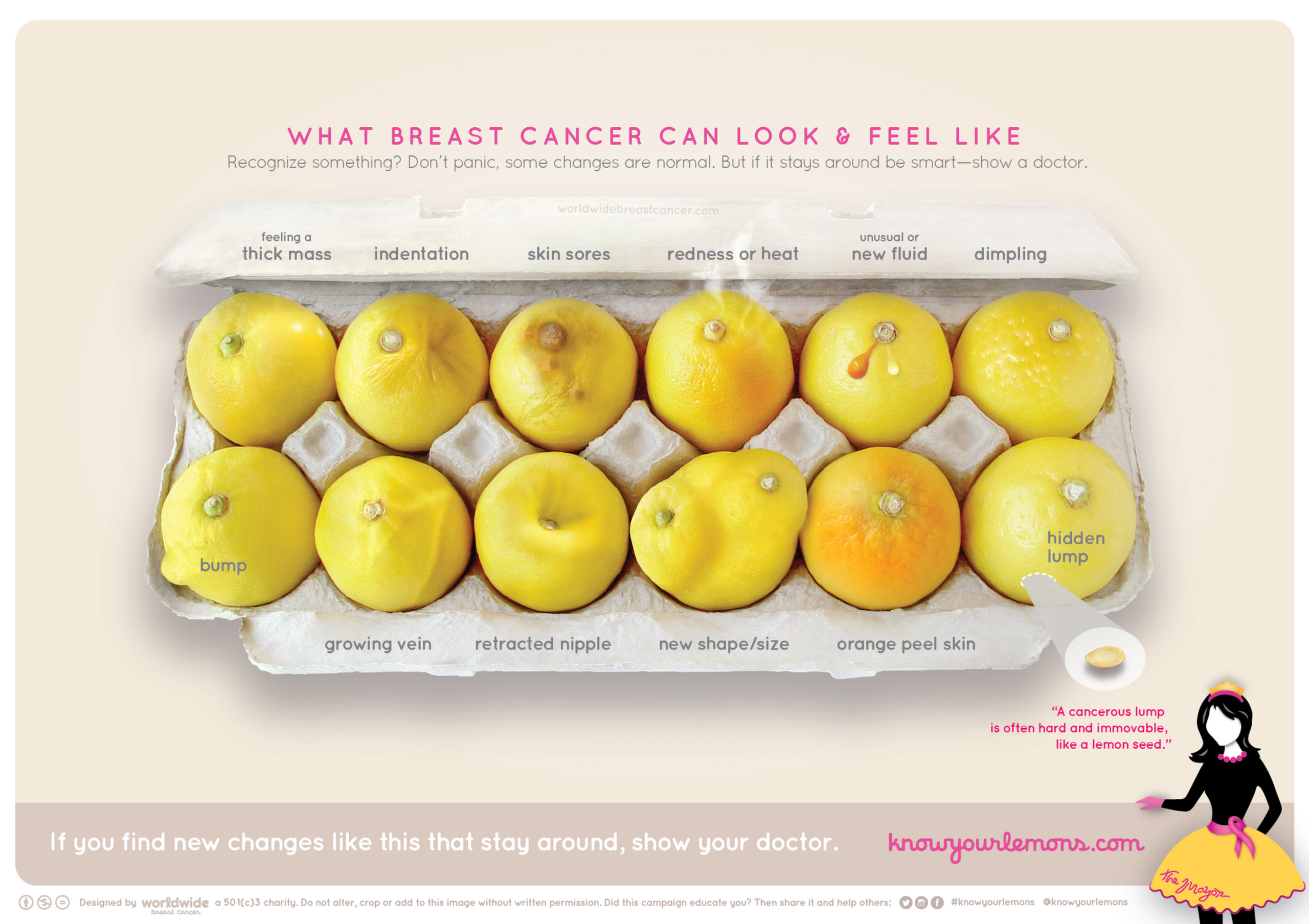
Various signs of breast cancer, as shown on lemons, to increase awareness
You can see more about the symptoms here, external - and you should see a doctor if anything alarms you.
Ms Perman says: "Finding breast cancer at an early stage can make a real difference to the chance of surviving the disease, so our advice is to get to know what's normal for you, and if you notice anything unusual, see your GP."
Why did Julian invent this bra?
He had a particular personal motivation for this project - when he was 13, his mother nearly died after her breast cancer was not detected early.
A doctor told her the lumps she had found were not malignant, but the doctor was wrong. Six months later, a second mammography found they were cancerous and in the end, both her breasts were removed.
After researching the illness and current diagnostic practices, Julian came up with his idea, filed a patent, gathered some friends to help run the business, and went about making a product that he hopes to have on sale as early as the end of next year.
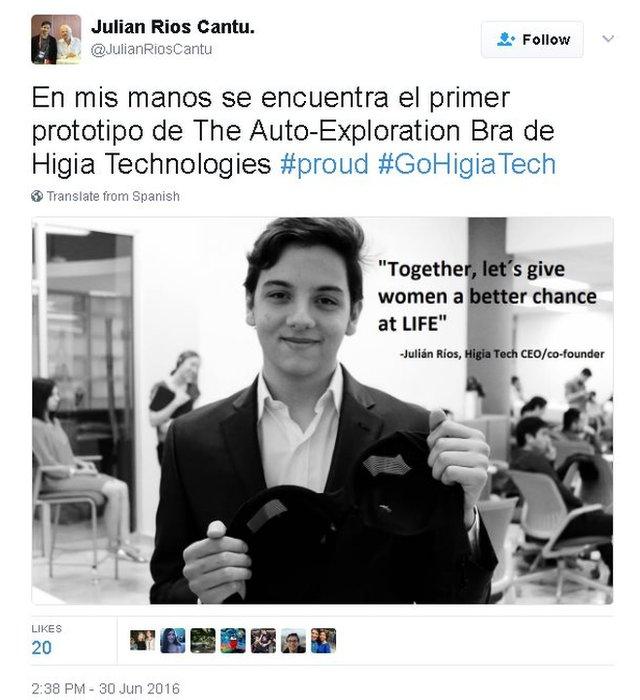
Last June, Julian tweeted "In my hands you see the first prototype of the Higia Technologies auto-exploration bra"
- Published15 January 2017

- Published8 November 2016
